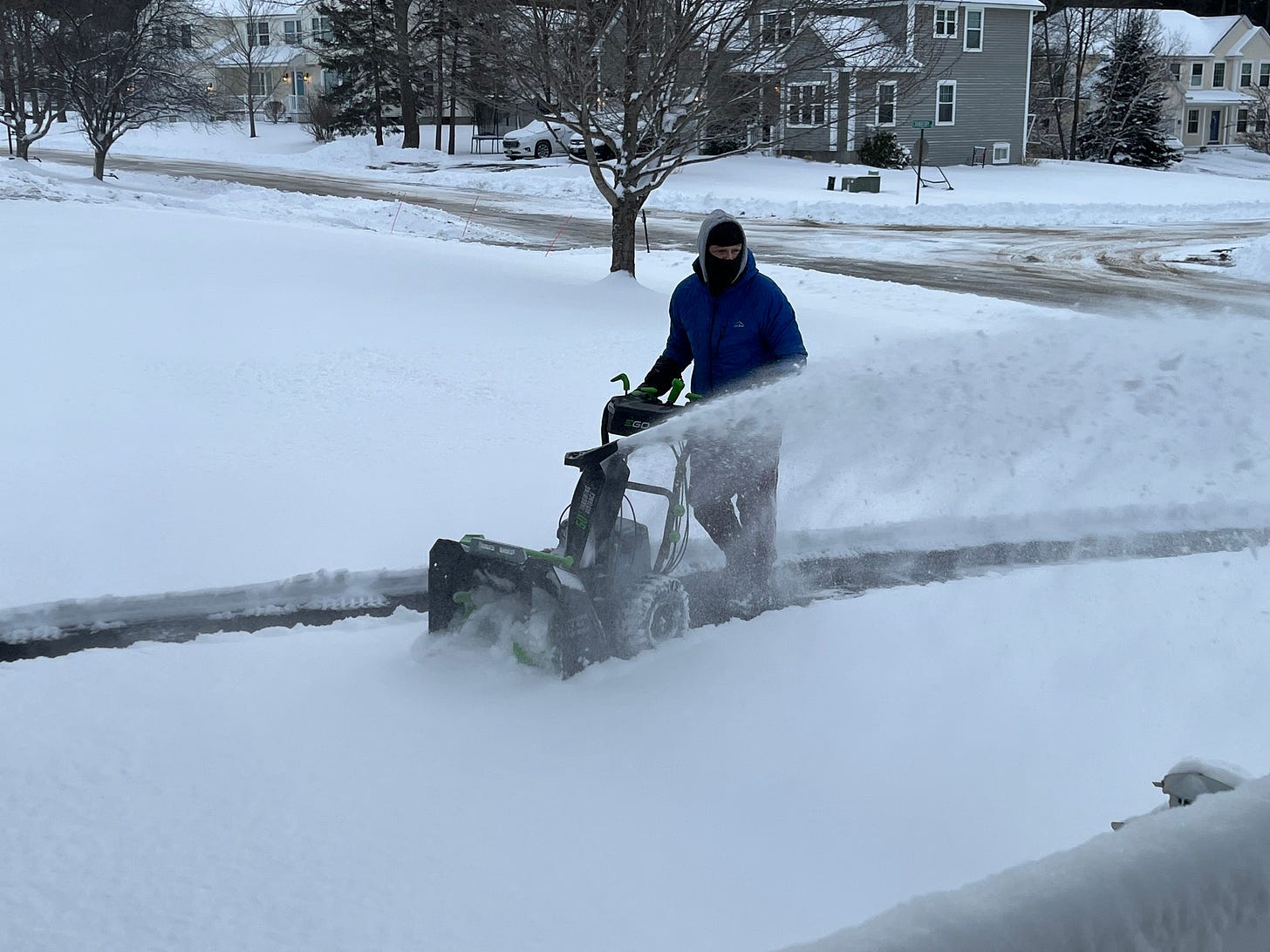A couple years ago I sold my very old gasoline powered Craftsman snowblower and bought an electric Ego snowblower, the SNT2405.
The Craftsman I had was a small gas snowblower and the Ego is about the same size, a 2-stage, 24” width, 20” height snowblower.
The Ego is powered by two 7.5aH batteries. I also have an Ego lawn mower, which uses the same battery, although only one, and another extra one. So I have a second set I can also use with the snowblower.
Ego has recently come out with a larger 28” width snowblower that uses larger 12aH batteries.
For a snowblower, the Ego is not too noisy and is much lighter than a gas one. I love the controls for the most part, but the stick that adjusts the chute from side to side is a bit hard to move. I do like the precise speed control that it has.
The Ego has plenty of power to throw snow, especially when it is light and fluffy. Unfortunately that type of snow is not super-common here on the coast of Maine. We often get wetter, heavier snow. Or we get wet snow on the bottom and fluffy stuff on top.
Both those types of snow will burn through the batteries rather quickly. Depending on the amount of snow, I am usually able to finish the entire 6-car driveway on one set of batteries, needing to switch to the second set to also do the sidewalks and the paths through the yard for the dog.
We recently had a storm that proved to be the worst case for the Ego, however. Surprisingly it was not heavy, wet snow. It was a combination of several things. First is that the prior day was warm with temps in the 40s. The next day it snowed overnight and by morning the temp was around 15F.
This meant that there was a wet layer of snow on the ground and fluffy snow on top of it. The wet layer on the ground had not froze because of the blanket of fluffy snow on top of it.
The Ego started off by sucking up the snow with no problem. But this wet snow soon started sticking to the inside of the chute and, because the temperatures was so cold, started to freeze. Eventually it completely clogged the chute.
I had to keep stopping to whack the chute with the plastic tool to get the snow throwing again, but it proved a losing effort as this wet snow was also freezing on the augers as well, preventing any snow from throwing.
I have since sprayed everything down with some silicone to help prevent sticking, but this was a somewhat unusual situation that I may not see again soon. If temps had been in the 20s instead of the teens, the wet snow would not have frozen so quickly and I likely would have been able to finish before it became a problem.
In fact, a storm the following week was about 3 inches and I was able to do the entire driveway, the sidewalks and a path around my house all on a single set of batteries with about one bar left one each, which was certainly a much better result!
However, I never ran into the clogging/freezing issue with my gas snowblower and it does bring up one significant advantage it had: the excessive heat generated by the engine helped to melt snow on and around it.
Electric snowblowers don’t have much waste heat and thus don’t melt anything during use. Perhaps Ego should add heaters to the main chute areas to help melt snow. They would function like the defroster or seat heater in an EV.
I do see that their largest snowblower has heated handles!
I still prefer the Ego over any gas snowblower. Gas snowblowers are insanely loud and reek of badly burned gasoline, meaning that you also stink after using it. Plus they need a fair amount of maintenance that I can’t do myself. They are big and heavy so transporting them is difficult.
EVs have a similar problem. In colder climates you’ll notice snow in the road can get melted by the cars driving over it, again because ICE vehicles emit a lot of heat. But EVs don’t emit heat so cannot help melt snow on the road. This is all probably for the best, but it is something to keep in mind.
Here’s a video of the Ego snowblower in action:





